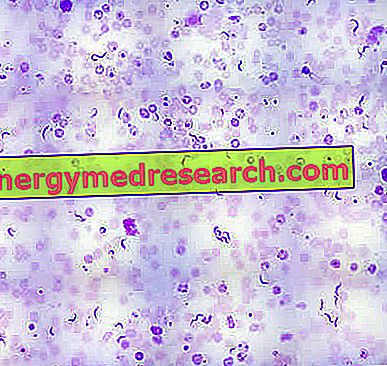Definition
Sleeping sickness - also known as African trypanosomiasis - is an infectious disease that is transmitted to humans through the bite of infected tsetse flies.
It is a typical disease of Africa and can affect both humans and some animal species.
Causes
Sleeping sickness is an infection caused by flagellated protozoan parasites: Trypanosoma brucei rhodesiense (responsible for East African sleeping sickness, also known as subacute trypanosomiasis, whose course is violent and brief, ) and Trypanosoma brucei gambiense ( responsible for Gambia's sleeping sickness, also known as chronic trypanosomiasis).
Symptoms
The symptoms induced by the sleeping sick are different depending on the stage in which the pathology is found.
In the first stage of the disease - defined as "hemolymphatic phase" - symptoms such as fever, joint pain, swelling at the site of the fly bite, itching and swollen lymph nodes in the neck occur.
In the second stage - defined as "neurological phase" - uncontrollable lethargy, cachexia, apathy, headache, weakness, anxiety, sweating and inability to get up and feed alone are manifested.
Information on Sleep Disease - Drugs for the Treatment of Disease is not intended to replace the direct relationship between health professional and patient. Always consult your doctor and / or specialist before taking Sleep Disease - Disease Treatment Medicines.
drugs
Sleep sickness is a serious condition that - if not properly treated - leads to certain death of the patient. Therefore, a timely diagnosis of the disease and the establishment of an equally immediate and appropriate therapy is essential.
The pharmacological treatment of sleeping sickness varies according to the stage in which the pathology is found.
The drugs used in the treatment of sleeping sickness are pentamidine, suramin, melarsoprol and eflornithine, both in monotherapy and in combination with nifurtimox. However, unfortunately, some of these drugs are quite old and can cause serious side effects.

Tripanosomes in a blood smear, visible as "small snakes" between the red blood cells
suramin
Suramin is a drug with antiparasitic action discovered in 1921. It is used for the treatment of sleep sickness in the hemolymphatic phase. However, it is effective only against T. brucei rhodesiense .
Suramin is administered intravenously. In general, 100 mg of active ingredient is first injected, in such a way as to exclude any hypersensitivity.
Once hypersensitivity is excluded, 1 gram of drug is usually administered in adult patients. The same amount of suramin is then administered the third, seventh, fourteenth and twenty-first day of treatment.
In children, on the other hand, the dose of suramina usually used is 20 mg / kg of body weight per day, to be administered in the same way as for adults.
pentamidine
Pentamidine (Pentacarinat ®) was discovered in 1941 and is used in the treatment of haemolymphatic sleep sickness caused by the parasite T. brucei gambiense .
It is a drug that appears to be well tolerated by patients and is administered intramuscularly, or by slow intravenous infusion.
The dose of pentamidine usually used is 4 mg / kg of body weight per day, or every other day, up to a total of 7-10 injections.
melarsoprol
Melarsoprol is a derivative of arsenic discovered in 1949 and can be used to treat sleeping sickness in the neurological phase caused by both T. brucei rhodesiense and T. brucei gambiense . However, it causes considerable side effects, the most serious of which is probably reactive encephalopathy which can also be fatal.
Generally, the drug is administered in adult patients intravenously at a dose of 2-3 mg / kg of body weight. The course of therapy lasts three days and is usually repeated after an interval of one or two weeks.
In children, on the other hand, the initial dose of melarsoprol usually used is 0.36 mg / kg of body weight, to be always administered intravenously. Later, the doctor may decide to gradually increase the amount of melarsoprol used until the optimal dose is reached for each patient.
eflornithine
Eflornithine (Ornidyl ®) is less toxic than melarsoprol, but it is effective only for the treatment of sleep sickness in the neurological phase caused by T. brucei gambiense .
In adult patients, the initial dose of eflornithine usually used is 400 mg / kg of body weight per day, to be administered in four intravenously divided doses, for a period of 14 days. After that, eflornithine treatment is continued with the administration of 300 mg of drug per kg of body weight, to be taken orally for about 3-4 weeks.
In children, however, the use of eflornithine is not recommended.
Moreover, a combined treatment has been recently introduced (2009) which provides for the administration of eflornithine in association with another drug: nifurtimox.
Indeed, nifurtimox is usually used to treat American trypanosomiasis (or Chagas disease) caused by Trypanosoma cruzi . However, this active ingredient - in combination with eflornithine - has also proved effective in treating sleeping sickness caused by T. brucei gambiense .



